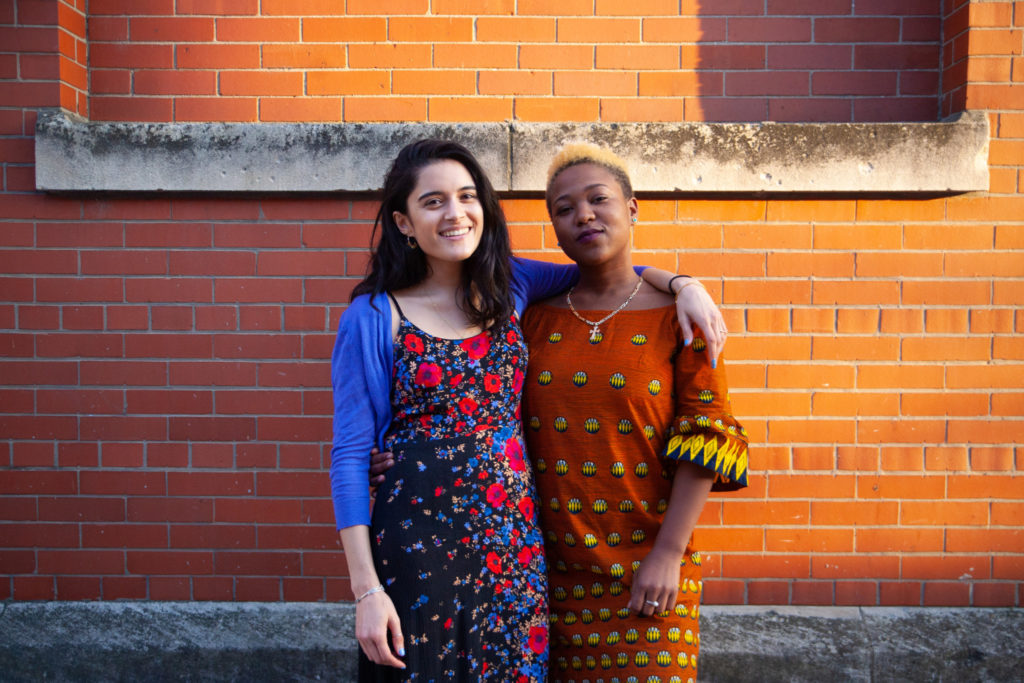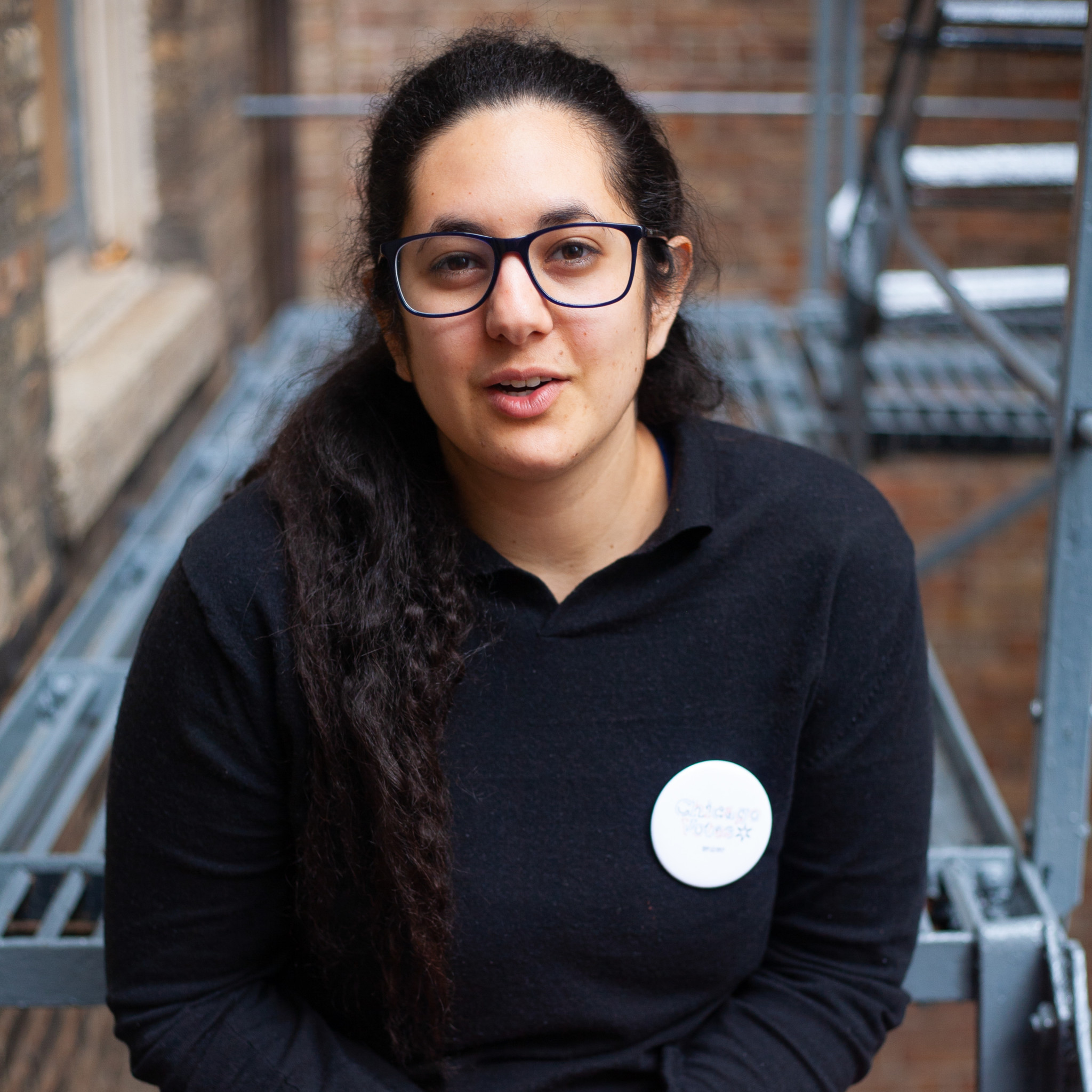Alex Boutros believes in the value of voting.
As a community organizer for Chicago Votes, she works with young people to get them excited about civic engagement and to show them why voting should matter to them. But when Boutros first arrived in Chicago as an eighteen-year-old, she didn’t vote in the 2015 mayoral election.
The 2015 race had Mayor Rahm Emanuel running for re-election, and culminated in a runoff between Emanuel and then-Cook County Commissioner Jesús “Chuy” García, who has since been elected to Congress. García supporters argued the election held the potential for a shift from Chicago’s corporate Democratic “machine” to more progressive grassroots politics.
Boutros had come to Chicago from Michigan, and didn’t know anything about García, Emanuel, or how they fit into the bigger picture of Chicago politics. Instead, as a freshman at DePaul University grappling with new people and places, she wasn’t even aware that elections were happening.
It was only after the runoff had passed that Boutros had the chance to learn more about Chicago politics. She began to regret not casting a ballot.
“Rahm won, and I was like damn, I should have voted,” she said.
At the time, she simply blamed her own negligence. But since then, Boutros’ work as a community organizer has shown her that low voter turnout, particularly among young people aged eighteen to twenty-four, can have more institutional origins.
As usual, this year’s February mayoral elections saw far fewer voters than November’s statewide election: some say holding elections in February is partially due to manipulation by the Chicago machine in a move to protect incumbents. Only 35.45 percent of Chicagoans voted in February 2019, compared to 60.67 percent in November 2018. The runoff between Lori Lightfoot and Toni Preckwinkle saw slightly lower voter turnout, at just 33.08 percent.
While newspapers and elected officials traced the low turnout to reasons such as poor February weather and too many candidates—or, in the case of Lightfoot and Preckwinkle, candidates who were too similar—much was also made of the sharp decline in the number of young people who voted, in contrast with the November 2018 elections. In comparison to the 57,221 ballots cast by voters aged eighteen to twenty-four in the November, only 19,495 young voters turned out for the February 2019 elections, according to extrapolated numbers provided by the Chicago Board of Elections this week. (However, this was a notable increase from the 13,839 votes cast by eighteen-to-twenty-four-year olds in the 2015 municipal elections.) Referencing youth protests against the shooting of Laquan McDonald, Sun-Times columnist Mary Mitchell speculated that “maybe the millennials mistakenly thought their work was done.”
Shawn P. Healy, democracy program director at IllinoisCivics—a website that provides online civic education—argued in a blog post that accusations against young voters are unfair. Healy pointed out that the turnout for voters aged eighteen to twenty-four was one of the largest increases in turnout among the different age groups from the 2015 municipal election. He outlined how voter turnout in general tends to decrease when elections have a more local focus, and argued that February’s “coverage of turnout [was] incomplete, and analysis of the underlying reasons for poor participation [was] wanting.”
In an op-ed for The Triibe, journalist Charles Preston opposed Mitchell’s column by highlighting the fact that political engagement does not just manifest itself in voting. He named a number of grassroots campaigns started by young Chicagoans, such as Good Kids Mad City, a student-led movement against gun violence and unfair decisions made by government officials, to show just how politically engaged young Chicagoans are.
According to Trina Reynolds-Tyler and Maira Khwaja—who do youth voter outreach through their group TM Productions—while these movements do show a level of political engagement, they also highlight a lack of faith in the current political system by showing that youth are turning to alternative means to try and achieve political change. “For a lot of people, voting is like choosing to play a part in the government system,” said Khwaja.

Chicago’s political system has long been designed to protect incumbents. As a result, many young people have grown up seeing the same name on their ward ballot again and again. 28th Ward Alderman Jason Ervin, for example, has held office since he was appointed to the position by Richard M. Daley in 2011, and in 2015 he ran unopposed after knocking all seven challengers off the ballot with petition challenges. (He attempted to do the same this year, but ended up facing three challengers, whom he easily bested without a runoff.) This leads to a lack of motivation or even awareness of the possibility for political change.
Additionally, for new voters, the mechanisms of voting can be daunting. According to Khwaja, many young voters have actively unpleasant associations with the voting process itself, particularly the computerized process, long ballots, and negative associations with polling places located in institutions such as schools and police stations.
“A lot of kids said it reminded them of getting booked, or taking the SAT,” said Khwaja. She explained that the mistrust that many young people have of the government and its officials often makes them reluctant to provide more information about themselves, and thus discourages voting.
According to Boutros, “[organizations] can’t simply make voter guides and expect people to read them.” The key is instead to guide a new voter through the electoral process, holding their hand at every stage.
“We need to find interesting ways to incorporate voting into our everyday lives,” said Reynolds-Tyler.
Grassroots campaigns may be more successful in securing youth support because they are directly applicable to lives of the young people driving them: for example, the high youth participation in campaigns like #NoCopAcademy can be attributed partly to personal negative experiences with the police.
Reynolds-Tyler and Khwaja are experimenting with using different forms of media as other ways to inform voters on their local politics. “Voter guides are a lot of words,” said Reynolds-Tyler. “Even for me, and I’m a master’s student.”
Aside from biased campaign ads, there are few, if any, comprehensive non-partisan sources using video or audio. This year, Khwaja and Reynolds used grant funding from the Midwest Culture Lab, a project of the Alliance for Youth Organizing, to experiment with mixed-media work to inform voters in different ways, such as making short videos about runoff candidates Lightfoot and Preckwinkle, in order to provide additional information to complement voter guides.
Get-out-the-vote organizers also emphasize the importance of making the voting process fun. In the opinion of Jen Dean, co-deputy director of Chicago Votes, the most effective way to encourage voter turnout is to “turn voting into a celebration.”
Chicago Votes organizes events such as Parade To The Polls program and Give A Sh*t Happy Hours, events that make voting both fun and an immediate possibility for those who find it difficult to get to the polls. During Parade to the Polls, organizers travel around the South and West Sides and drive people to the polls.
Partnerships also help these organizations reach more voters: Chicago Votes has partnered with the Women’s March and CPS high schools. Boutros works with students in CPS schools to educate them on voting. However, she believes that this kind of education needs to be institutionalized as a fundamental part of school programs, in order to have as wide-reaching an effect as possible.
“It needs to be an effort by the City of Chicago and Chicago Public Schools,” she said. “You can’t just dedicate a couple of lessons to this, and expect students to understand democracy.”
As a result, Boutros’ experience working as a get-out-the-vote organizer has given her a different kind of disillusionment with the political system. Although she continues to believe in the immense power of voting, “the more work you do around getting people to vote,” she said, “the more you see the lack of effort the city and the country puts into getting people to vote.”
Editor’s note: Maira Khwaja is a former Weekly editor, and Trina Reynolds-Tyler is a former administrative employee of the Weekly. Both contribute to the Weekly.
Editor’s note: in print, this story was entitled “Turning Up” due to an editorial error. “Turning Out” is the correct title.
Jade Yan is a writer for the Weekly. She last wrote about an animal rights activist group that holds vigils around Chicago.

